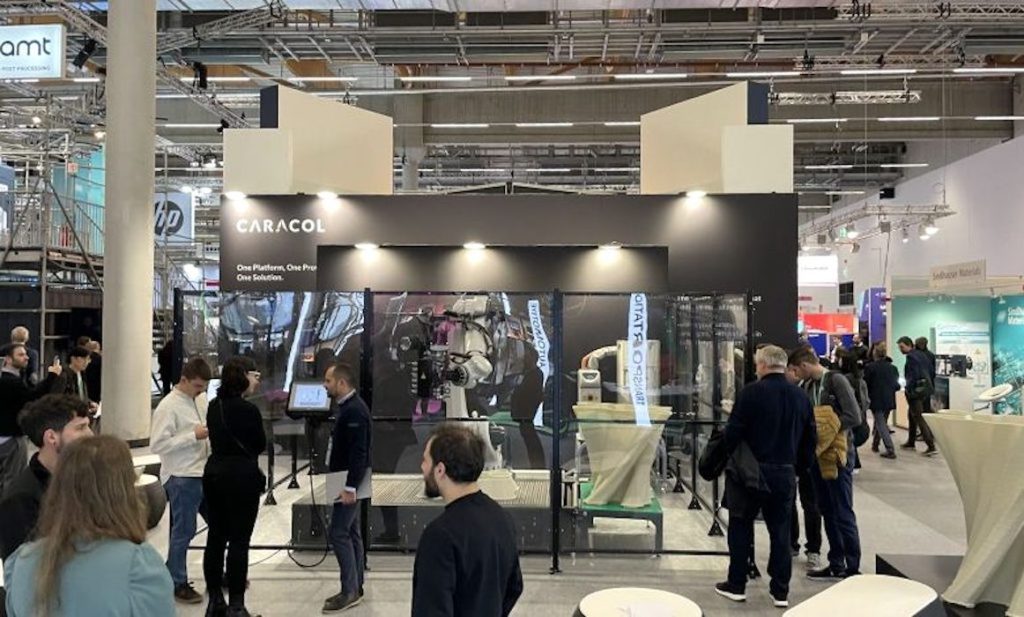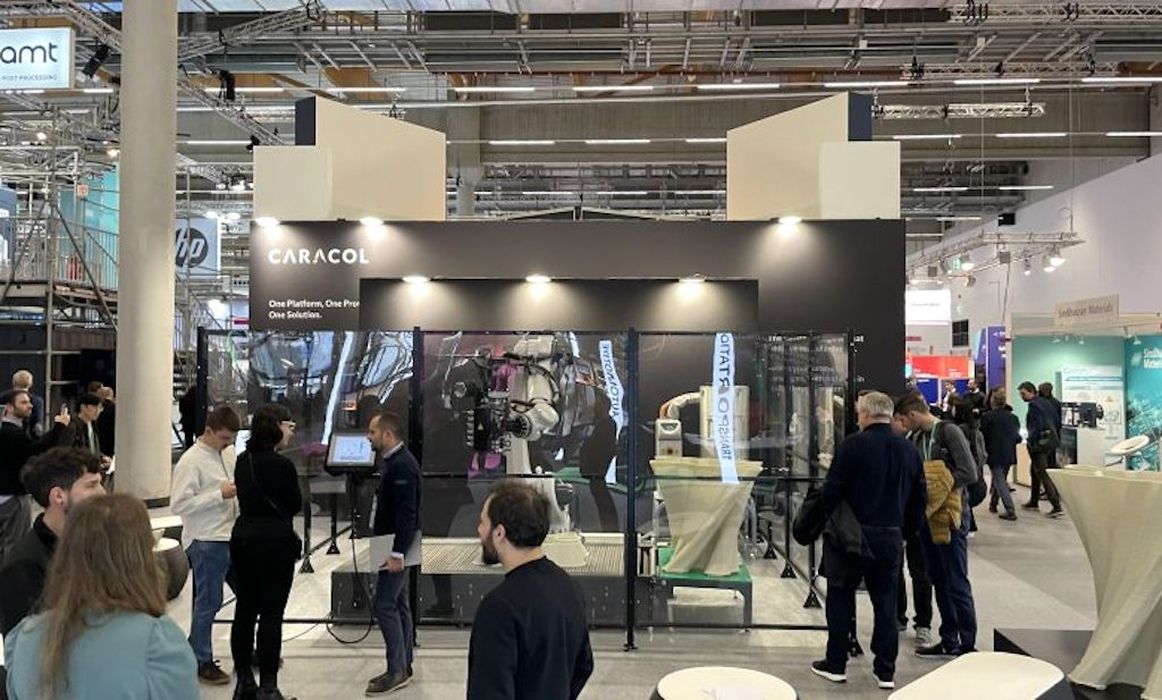
Caracol’s offering makes LFAM easier than ever with the introduction of two new major innovations – the High Flow Extruder and the Automatic Printing Bed.
The additive manufacturing industry’s interest in robotic printing solutions and other forms of Large Format AM is increasing rapidly – as was made obvious at this year’s Formnext, in Frankfurt.
With fiber-reinforced materials, and the abilities and cost efficiencies generated by printing using granules, it is becoming easier and more practical to print parts well above the square meter.
What started out as a research project focused on overcoming the limits of existing AM technologies, in 2015, resulted in the founding of Caracol as a company, in 2017. Since then, the Caracol team has pioneered the LFAM segment – becoming Italy’s first LFAM company with AS/EN 9100 certification.
After years of development, and countless case studies, Caracol launched its Heron AM platform to the market in September this year. Heron AM is well-suited for the manufacturing of an extensive range of parts across different industrial sectors, including structural elements, tooling, prototypes, metal replacement parts, the temporary or permanent substitution of parts, and a wide array of other applications.
Then, once again at Formnext, the company announced two new major innovations – the High Flow Extruder and the Automatic Printing Bed.
Caracol’s new High Flow Extruder was built to be the solution needed to create larger and more complex parts, thanks to the high throughput. The higher temperature, which can get up to 450°C, was introduced to process an increasingly extended range of technical polymers and composites with higher-melting points – while still maintaining the best properties and print quality thanks to the greater thermal control.
In addition to this, the extruder incorporates a set of features that enable greater control, performance, and flexibility – including sensors for temperature, material feeding, and monitoring of production parameters.
The High Flow Extruder was developed to print larger parts than previously possible – such as aerospace tools, entire boat hulls, and single-part architectural installations, to name just a few. While ensuring greater stability and quality on larger parts, thanks to the extruder’s optimization, it also enables notably high-speed printing – with a throughput ranging between 20-30 kg/h. All this makes Caracol’s platform competitive with bigger gantry systems while, at the same time, maintaining the flexibility and the 6+ axes that only the robotic support can provide.
Caracol’s all-encompassing offering makes LFAM easier than ever before – with the High Flow Extruder and the Automatic Printing Bed. Caracol’s recently-presented Automatic Printing Bed was designed (and patented) with a focus on two main features – to improve the mechanical grip for the first layer, as well as to help automate the production process.
Read the rest at 3DPMN

